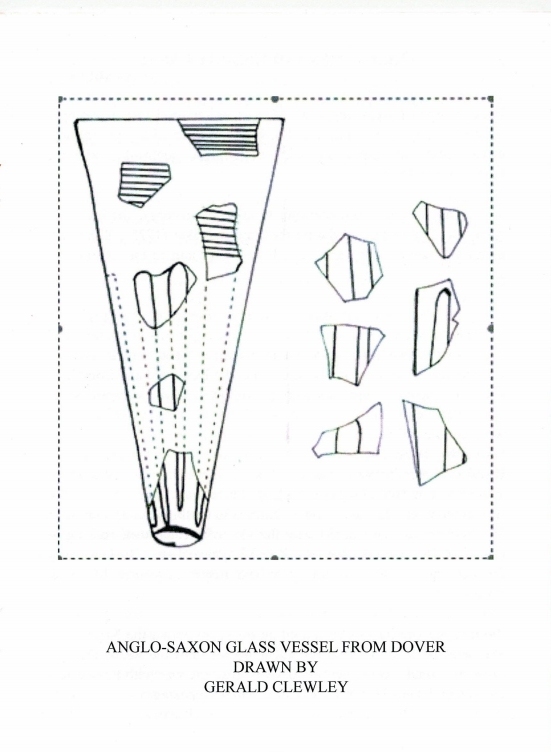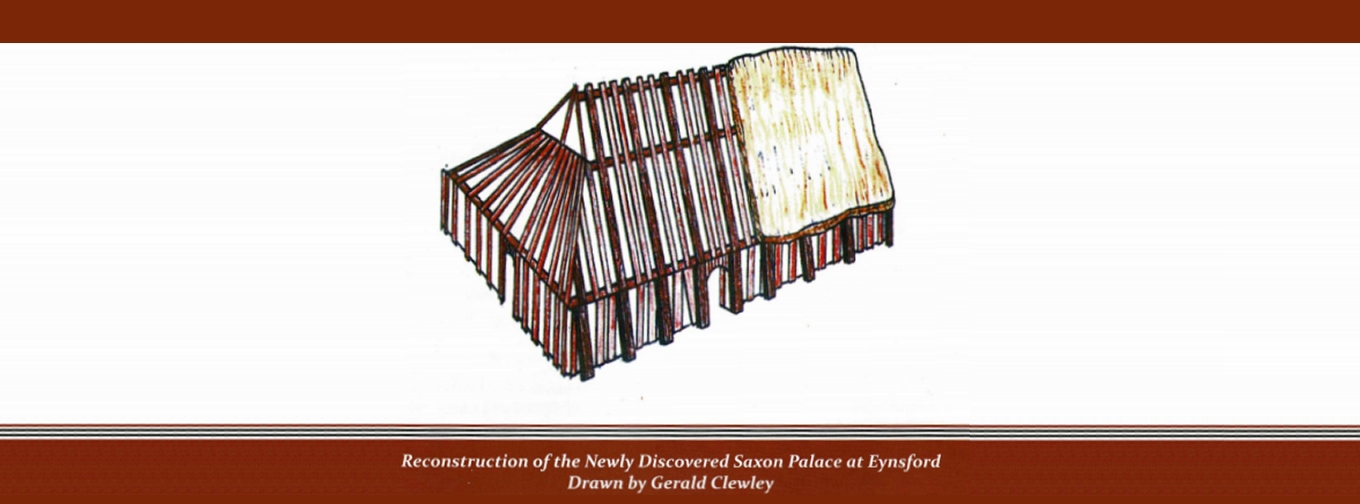ANGLO-SAXON GLASS VESSELS FROM DOVER
GERALD B CLEWLEY
During the excavation of the Roman Bath-house in Dover in 1979, by the KARU, at least fifteen fragments of pale green glass were discovered. These all came from a disturbed deposit well above the levels of the bath-house. They represent two very rare and expensive cone beakers of which six of the fragments have been partially reconstructed and also another six fragments belonging to another (Fig. 1). Three more fragments are from a possible palm cup. These have not been published before.
A large collection of Anglo-Saxon glass is known from Kest, with most of it coming from cemeteries. The distribution centre seems to radiate from the Faversham area although a few have been found as far afield as Yorkshire. Indeed, these vessels are not well represented north of the Thames in contrast to the amount found in Kent
The main Dover example is a pale green glass and the fragments make up part of a tall cone beaker. Below the rim is a series horizontal trails, whilst the main body is decorated with vertical loops. This form is termed the 'Kempston-type' after a site in Bedfordshire, though there are variants reflecting the hand-made process. A similar type of beaker was found in a grave in the Anglo-Saxon cemetery in Mitcham, Surrey. This is now on display in the Museum of London, (Image id. 59574) where it is noted that this may have been imported from France, Belgium or Germany. These vessels are regarded as high-status symbols of wealth and placed in graves for the after-life. They date from the second half of the fifth century to the middle of the sixth century.
Two more cone beakers from the Dover area are, from Grave 70a in the Mill Hill, Deal cemetery (pub. in 1997) and another in Grave 297 in the Buckland cemetery. In addition, two identical cone beakers were found in Grave 184 in the Saxon cemetery at the Meads, Sittingbourne.


